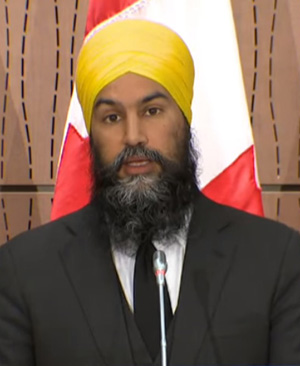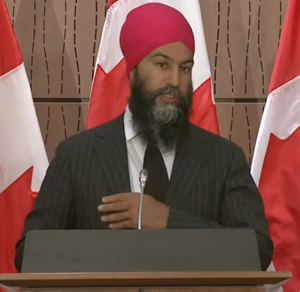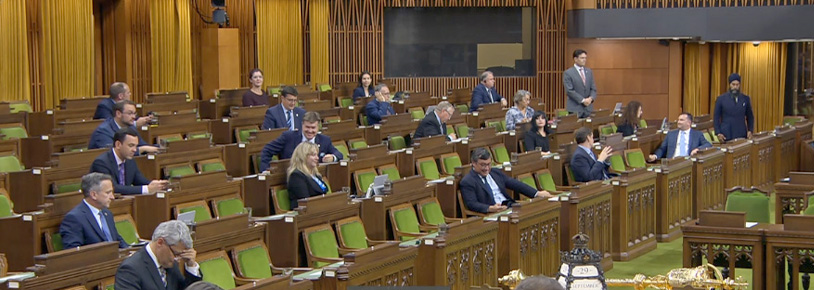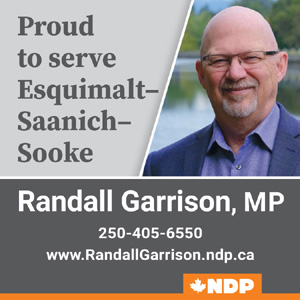
Monday December 28, 2020 | SOUTH VANCOUVER ISLAND, BC
Analysis by Mary P Brooke, editor | Island Social Trends
Given that there is a minority parliament in Ottawa, it’s no surprise that thoughts of a federal election are on the minds of federal political parties.
The NDP Party under Leader Jagmeet Singh has already started nominating candidates and continues seeking funding from members and supporters packaged in the context of a possible upcoming election. Indeed, so boldly, the NDP party states today: “Before the end of this week, we could be in an election year.”
There is very little detailed chatter yet as to who candidates might be. Though compared to the 2019 election cycle it’s not likely that the NDP will see the same level of candidate churn. In other words, most of the current guard is likely to run again.
Here on South Vancouver Island that would mean Randall Garrison, MP (Esquimalt-Saanich-Sooke) running for a fourth term, Alistair MacGregor, MP (Cowichan-Malahat-Langford) running for a third term, and Laurel Collins, MP (Victoria) running for a second term. For Singh it would also be a second full election (he was first elected in a by-election in Burnaby South).
A strong claim for political success:
The NDP can quite legitimately claim large swaths of success of the federal response to the COVID-19 health emergency. Under Singh’s leadership they manoeuvered the process to producing for Canadians the $2,000 per month Canada Emergency Response Benefit aka CERB (up from a previously lower amount that would have been insufficient to cover basic needs), secured some paid sick leave for all workers (as a way to fortify the ‘ask’ to stay home if ill), the 75% wage subsidy (which the Liberals started out with at 10%), and stood up for youth and students in ways that produced support in that population segment as well (e.g. Canada Emergency Student Benefit).
“Grassroots support is the only way this work gets done,” said Singh in a statement today.
Planning for economic recovery:

Inarguably, the economic recovery of Canada is set to be in a more favourable position (when the time comes) to “come roaring back”, as Prime Minister Justin Trudeau has described the economic recovery that will be made possible once spread of the COVID-19 virus is under control.
The most recent federal election was in October 2019, pre-COVID. While the Liberals again won the most seats, that number was diminished. To win any legislative vote in this 43rd parliament, the Liberals have needed the support of at least one other Opposition party.
For the socially-progressive aspects of legislation during the pandemic (like the CERB, and paid sick leave) it was the NDP that repeatedly (though conditionally) promised their support to Trudeau’s government if certain people-first conditions were met.
One case in point of how this NDP-progressive pressure was needed for the benefit of Canadians was how quickly (in the summer) the Liberals began to shift the CERB support back into a more contained set of programs once again filtered through the more structured Employment Insurance (EI) program, and how the attention paid to the well-being of small businesses was also possibly in the shotgun sights of the corporate-driven Liberals (even the new flavour of CERB for the self-employed — the Canada Recovery Benefit or CRB — deducts tax before issuance instead of being a straight-out support payment, and requires a fairly rigorous bi-weekly re-application).
Propping up one’s captor:
In that context, it could be said that Trudeau truly “owes one” to Singh for the overall smooth sailing that that Liberal government has had during this election, and the still-high ratings in public polls about the federal government’s overall response to the pandemic in 2020.
It puts the NDP in an odd position of having propped up the very party that will try to win back a majority in any election that may happen in 2021 or 2022.
NDP contribution to a ‘new’ Canadian safety net:
Because of these positions set forth by the federal NDP during COVID, there is even now the realistic opportunity for public consensus (and a legislative vote in favour) on a basic income for all Canadians, so that no one falls between the cracks in this country, going forward.

House of Commons profile:
Due to the need — by anyone’s view — that it was necessary to focus on dealing with the impacts of the pandemic this year, it is ironic that this has created a level of government stability not normally expected in a minority scenario.
Presently the seat distribution in the House of Commons (338 seats) is: Liberal 155, Conservative 121, Bloc Quebecois 32, NDP 24, Green Party 3. Of the total 338 member of parliament seats, 100 are held by women and 238 by men.

Timeline factors ruled by a virus:
Although three provincial elections were held relatively successfully during phases of the second wave of the COVID-19 pandemic this fall (in New Brunswick, BC and Saskatchewan), it’s likely there would be little ‘appetite’ for a federal election by MPs and their parties until a reliable immunization program is underway across the country (which of course depends on the widespread availability of effective vaccines).
The current projections for a strong rollout of vaccines is for that sort of scenario to begin in the spring (after a focus on vaccinations being made available first to frontline health-care workers in January to March), and a stated goal by the prime minister that most Canadians will have been vaccinated before fall 2021.
Thereby, apart from how particular votes might roll in the House of Commons based entirely on party stance or philosophy, the strategy for a 2021 federal election might hinge itself around summer (presumably some level of population immunity to COVID-19 and presumably less spread of the virus in summer weather) or September/October of 2021 when presumably when ‘most’ of the Canadian population will have had an opportunity for vaccination.
There is also the practical consideration of the availability of campaign workers during a pandemic, despite that much of any COVID-season campaign would be held online and through social media.




